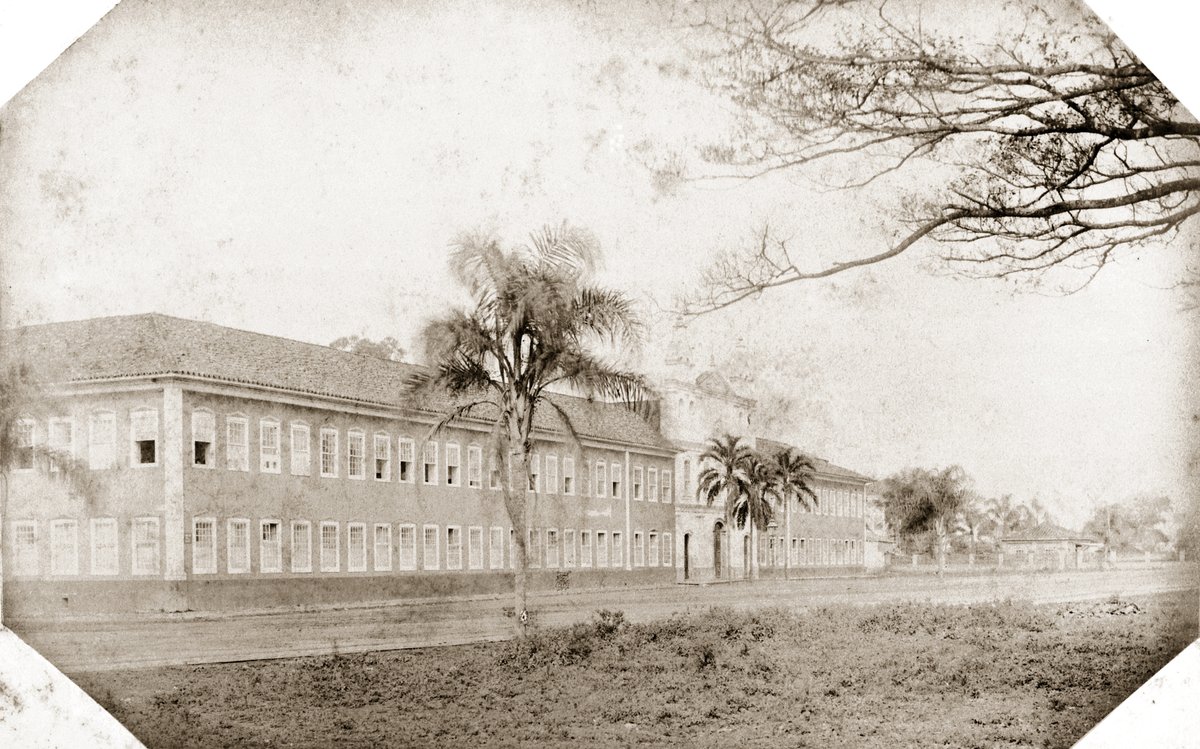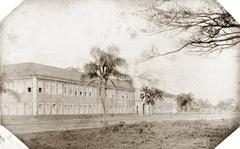
Igreja de São Cristóvão: Visiting Hours, Tickets, and Historical Significance in São Paulo
Date: 14/06/2025
Introduction
Situated in the heart of São Paulo’s historic Luz district, the Igreja de São Cristóvão is a remarkable testament to the city’s layered religious, architectural, and cultural history. Established in the mid-19th century, this church is one of the few surviving examples of traditional taipa de pilão (rammed earth) construction in São Paulo and is emblematic of the city’s transformation from a colonial outpost to a modern metropolis. Revered for both its architectural features and vibrant community traditions—especially the annual blessing of vehicles in honor of its patron saint, Saint Christopher—the church remains a vital spiritual and cultural hub. This guide offers comprehensive insights into the church’s history, architecture, visiting hours, accessibility, and nearby attractions, ensuring an enriching visit for all.
For further details and official resources, see Archdiocese of São Paulo, ipatrimônio, and Wikiwand.
Table of Contents
- Discover Igreja de São Cristóvão: Overview
- Historical Foundations and Construction
- Architectural Evolution and Highlights
- Cultural and Religious Significance
- Restoration and Preservation
- Visiting Hours, Tickets, and Accessibility
- Location and Nearby Attractions
- Visitor Tips and Frequently Asked Questions (FAQ)
- Visuals, Media, and Further Resources
- Conclusion
- References
Discover Igreja de São Cristóvão: Overview
Igreja de São Cristóvão is a must-visit site for those exploring São Paulo’s historical and spiritual landscape. Its unique construction and enduring community role make it a central landmark in the Luz district, offering a tangible connection to the city’s past and present.
Historical Foundations and Construction
The church originated as the Capela do Seminário da Luz, constructed between 1853 and 1856 as part of the broader Seminário Episcopal complex. Founded under the guidance of Dom Antonio Joaquim de Melo, it played a crucial role in São Paulo’s religious and educational life in the 19th century. Its construction using taipa de pilão is significant, reflecting both the building techniques of the era and the resource limitations before the widespread adoption of brick and concrete.
The two-floor layout included a sanctuary above and administrative and residential spaces below, with a built area of approximately 768 m² on a 1,440 m² plot (Wikiwand).
Architectural Evolution and Highlights
Construction Techniques and Materials
The church’s taipa de pilão (rammed earth) walls are a rare surviving example of this colonial and imperial technique in São Paulo, notable for their substantial thickness and thermal properties (ipatrimônio). This method contributed to the durability and distinctive aesthetic of the building.
Layout and Stylistic Evolution
Originally, the church featured a simple yet functional design, serving both religious and community needs. The early 20th-century neoclassical facade added symmetry, classical detailing, and restrained ornamentation to the exterior, reflecting contemporary architectural trends.
Notable Features
- Symmetrical facade with pilasters, cornices, and classical proportions
- Rammed earth walls, visible where plaster is worn or intentionally exposed
- Interior elements such as stained glass, altars, and religious iconography
Cultural and Religious Significance
Igreja de São Cristóvão is deeply woven into São Paulo’s spiritual life. Dedicated to Saint Christopher—the patron saint of travelers and motorists—the church is particularly renowned for its annual July 25th blessing of vehicles, a tradition that draws large crowds seeking protection for their journeys (Arquidiocese de São Paulo). The church also hosts regular Masses, sacraments, and community events, reinforcing its role as both a place of worship and a center for social outreach.
Restoration and Preservation
After a period of decline—culminating in a wall collapse and closure in 1982—the church underwent extensive restoration, supported by heritage organizations such as CONDEPHAAT and Fundação Roberto Marinho. It reopened in 2001 as a protected cultural monument, with ongoing efforts to preserve its unique architectural and historical character (ipatrimônio).
Visiting Hours, Tickets, and Accessibility
Visiting Hours
- Monday to Saturday: 7:00 AM – 6:00 PM
- Sunday: 7:00 AM – 12:00 PM
- Note: Hours may vary during holidays or special events; check the parish website for updates.
Tickets and Admission
- Admission: Free of charge
- Donations: Welcome to support maintenance and community programs
- Guided Tours: Available by appointment through the parish office
Accessibility
- Wheelchair-accessible ramps at the main entrance
- Some areas may have limited access due to the historic structure
Location and Nearby Attractions
Address: Avenida Tiradentes, 84, Luz, São Paulo
Getting There:
- Metro: Luz Station (short walk)
- Bus: Multiple lines serve Avenida Tiradentes
- Taxi/Rideshare: Widely available in São Paulo
Nearby Cultural Sites:
- Museu da Língua Portuguesa
- Pinacoteca do Estado
- Luz Train Station
- Jardim da Luz Park
These attractions make it easy to plan a full day of cultural exploration in São Paulo’s historic center (LaidBackTrip).
Visitor Tips and Frequently Asked Questions (FAQ)
Tips for a Memorable Visit
- Arrive early during feast days or festivals (especially July 25th) for the best experience.
- Dress modestly out of respect for the sacred environment.
- Photography is generally allowed, but ask permission during services.
- Combine your visit with other nearby historical and cultural sites for a richer experience.
- Use public transport for convenience; Luz Station is nearby.
FAQ
Q: What are the visiting hours of Igreja de São Cristóvão?
A: Monday to Saturday: 7:00 AM – 6:00 PM; Sunday: 7:00 AM – 12:00 PM.
Q: Is there an entrance fee?
A: No, entry is free. Donations are appreciated.
Q: Are guided tours available?
A: Yes, by prior arrangement with the parish office.
Q: Is the church accessible for visitors with disabilities?
A: Yes, though some interior areas may have limited accessibility.
Q: What is special about July 25th?
A: The feast of Saint Christopher, featuring the blessing of vehicles and special Masses.
Q: Can I combine my visit with other attractions?
A: Absolutely—Museu da Língua Portuguesa, Pinacoteca do Estado, and Jardim da Luz are all within walking distance.
Visuals, Media, and Further Resources
- Photos: High-resolution images of the church’s facade, interior, and architectural details are available on the parish website and heritage portals.
- Virtual Tour: Some organizations may offer virtual walkthroughs—check parish and heritage websites for availability.
- Maps: Embed or consult interactive maps of the Luz district for orientation.
Conclusion
Igreja de São Cristóvão stands as a living chronicle of São Paulo’s religious, architectural, and community evolution. Its rare rammed earth construction, neoclassical facade, and enduring traditions—like the blessing of travelers—make it a unique destination for visitors interested in the city’s multifaceted heritage. With free daily admission, accessible facilities, and proximity to other cultural landmarks, the church welcomes both locals and tourists to engage with São Paulo’s past and present.
Plan your visit to Igreja de São Cristóvão for a meaningful and enriching experience in the heart of São Paulo. For the latest information on events, guided tours, and visitor tips, consult the official parish website and heritage resources.
References
- Wikiwand – Paróquia São Cristóvão (São Paulo)
- ipatrimônio – Igreja de São Cristóvão
- Archdiocese of São Paulo
- Lonely Planet – Things to Know Before Traveling to Brazil
- LaidBackTrip – São Paulo Guide




































































































































































